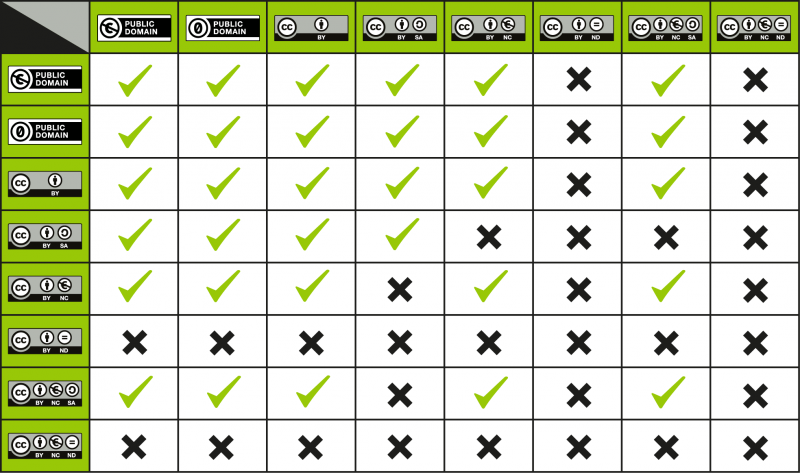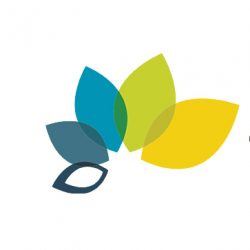Learning Objectives
By the end of this lesson, you will be able to:
- Combine work with different types of Creative Commons licenses
Introduction
In many cases, you will be creating new work based on the work of others. The Creative Commons (CC) license on each piece of content will determine if, and how, you are able to combine work that has been shared under different licenses. This is a very important step before any adaptation, or combining of work is done.
License Compatibility
Most of the CC licenses have good compatibility when remixing work under different licenses, but some of the licenses restrict our ability to do so. CC has shared a license compatibility chart that shows which licenses work together, and which ones do not allow content to be combined.

You will notice two things:
- Content under an ND license cannot be combined with any other content (because it cannot be adapted)
- Content under an SA license can only be combined with content under the same license
With those things in mind, there is still great remixing potential among content licensed under the more permissive CC licenses.
Collections and Curations
In specific use cases, it may be possible to combine content that has been licensed under a more restrictive license (SA and ND) that would not normally allow free remixing. For example, if you were to collect chapters from various OER books into one, these chapters may be able to carry their own licenses separate from the overall license on the book itself. If most of the content in the book were under a specific license, say CC BY, and there were a small number of chapters under a CC BY-SA license, it may be possible to license the entire book at CC BY so long as the license on those BY-SA chapters remained.
The details and nuances of this are beyond the scope of this training, but it is useful to know which licenses explicitly allow combination and remixing, and which licenses require more care when considering their reuse.
Knowledge Check
[h5p id=”8″]
[h5p id=”9″]
[h5p id=”10″]

